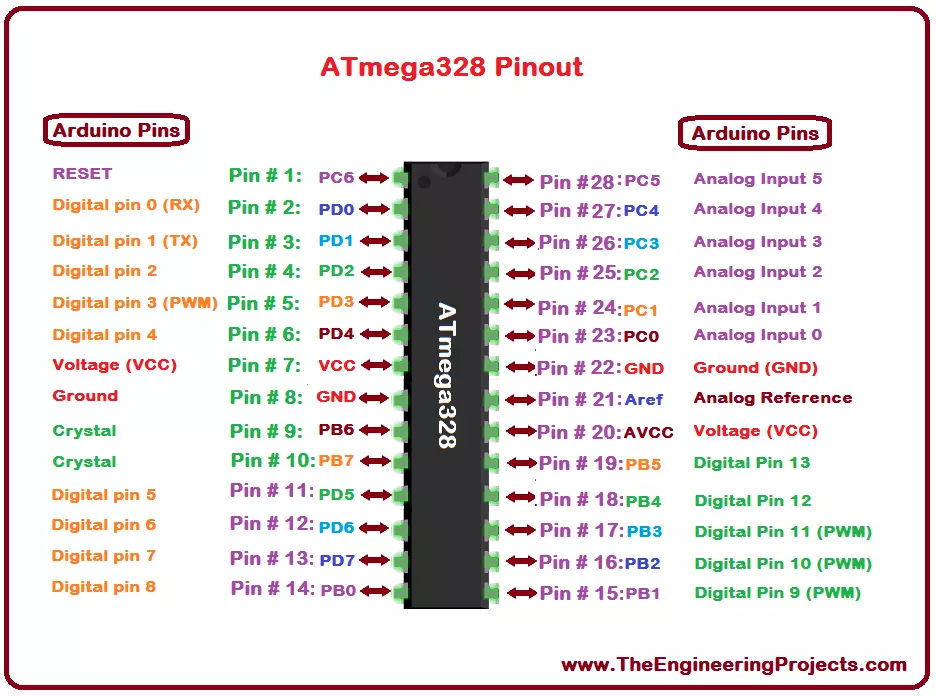Differentiate micro-controller and micro-processor
A microcontroller and a microprocessor are both integrated circuits that are designed to perform specific tasks in electronic systems. However, they have some key differences: A microcontroller is a single integrated circuit that contains all the components necessary to control a specific system, such as a microprocessor, memory, input/output interfaces, and other peripherals. It is designed to perform a specific set of tasks and is commonly used in embedded applications such as appliances, automotive systems, and industrial control systems. A microprocessor, on the other hand, is just the central processing unit (CPU) of a computer system. It is responsible for executing instructions and performing arithmetic and logical operations. Microprocessors typically require external components, such as memory, input/output interfaces, and other peripherals, to form a complete system. They are used in a wide range of applications, including desktop computers, laptops, and servers.
Microcontroller
Single integrated circuit that includes all the components necessary to control a specific system, such as a microprocessor, memory, input/output interfaces, and other peripherals. Designed to perform a specific set of tasks in embedded applications. Has a limited amount of memory and processing power.Cost-effective solution for simple systems
Microprocessor
The central processing unit (CPU) of a computer system that requires external components, such as memory, input/output interfaces, and other peripherals, to form a complete system.Designed to execute instructions and perform arithmetic and logical operations in a wide range of applications, including desktop computers, laptops, and servers.Has a larger amount of memory and processing power compared to a microcontroller.More expensive solution for more complex systems.
How many GPIO pins are available in Atmega328P?
The Atmega328P microcontroller has a total of 28 general purpose input/output (GPIO) pins. These pins can be used for a variety of purposes, including digital input (e.g., reading the state of a button), digital output (e.g., controlling an LED), and analog input (e.g., reading the value of a sensor). The number of available GPIO pins and the specific functionality of each pin can vary depending on the specific microcontroller model and manufacturer
How do you read a logic level of a digital input pin?
To read the logic level of a digital input pin in Atmega328P, you can read the value of the PINx (Input Pins x) register. The value of the corresponding bit in the PINx register will reflect the logic level of the corresponding pin on the microcontroller.
#define BUTTON_PIN PD2 #define BUTTON_PORT PIND uint8_t read_button(void) { return (BUTTON_PORT & (1<<BUTTON_PIN)); }
The function read_button reads the value of the PINx register for the button pin (PD2) using a bitwise AND operation. The bitwise AND operation masks all the other bits in the PINx register, leaving only the value of the button pin. The result of the operation is then returned by the function, allowing you to check the logic level of the button pin.
If the result of the bitwise AND operation is non-zero, it means that the button pin is at a high logic level. If the result is zero, it means that the button pin is at a low logic level
What is a bootloader program?
A bootloader is a program that runs on a microcontroller when it is first powered on or reset. The primary function of the bootloader is to load the main firmware or operating system into the microcontroller's memory and then start execution of the main firmware. Bootloaders are typically stored in a non-volatile memory area of the microcontroller, such as flash memory, and are designed to be executed every time the microcontroller is reset or powered on. This allows the bootloader to initialize the microcontroller, configure its peripherals, and load the main firmware into memory, before transferring control to the main firmware.
One of the key advantages of using a bootloader is that it makes it easy to update the firmware on a microcontroller without the need for a programming device. For example, a bootloader can be programmed to accept firmware updates over a serial or USB connection, allowing the firmware to be updated in the field. Another advantage of using a bootloader is that it can provide a failsafe mechanism for the microcontroller. For example, the bootloader can be programmed to detect certain conditions, such as a corrupted firmware image or an error during the firmware update process, and take appropriate action, such as reverting to a previous firmware version or entering a safe mode. Overall, bootloaders are an important component of many microcontroller-based systems, providing a flexible and robust mechanism for initializing the microcontroller and updating the firmware.









0 Comments